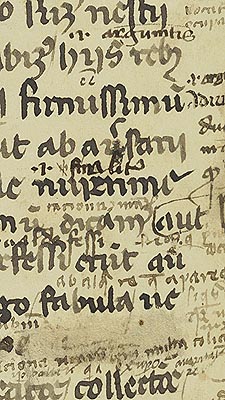
How the Classics Survived
![]()
The main problem of literary production in a manuscript culture was distortion
of the text by weary or careless scribes who introduced errors at successive
stages of copying. Modern scholars strive to recover the most complete
or earliest version of a text by comparing all the manuscripts of a given
work and analyzing differences between them.
Another complexity of textual transmission via manuscript was the tendency for works to be misattributed. The work on display here, known as the Rhetorica ad Herennium or De ratione dicendi (its actual title has been lost), was written in the first century B.C. At some juncture before the fourth century A.D. it was misattributed to the great orator Cicero, and this false attribution held for a thousand years. In the 15th century Renaissance humanists proved, on the basis of linguistic principles, that Cicero could not have been its author. Yet even after the connection to Cicero had been disproved, the manual’s long tradition compelled printers to publish it among Cicero’s works.
These books represent various stages in the preservation and reiteration of a classical text: medieval manuscript, early printed editions, and modern critical editions with apparatus and translation.

Copyright
© 2002 Division of Rare & Manuscript
Collections
2B Carl A. Kroch Library, Cornell University, Ithaca, NY, 14853
Phone Number: (607) 255-3530. Fax Number: (607) 255-9524
For
reference questions, send mail to:
rareref@cornell.edu
If you have questions or comments about the site, send mail to: webmaster.